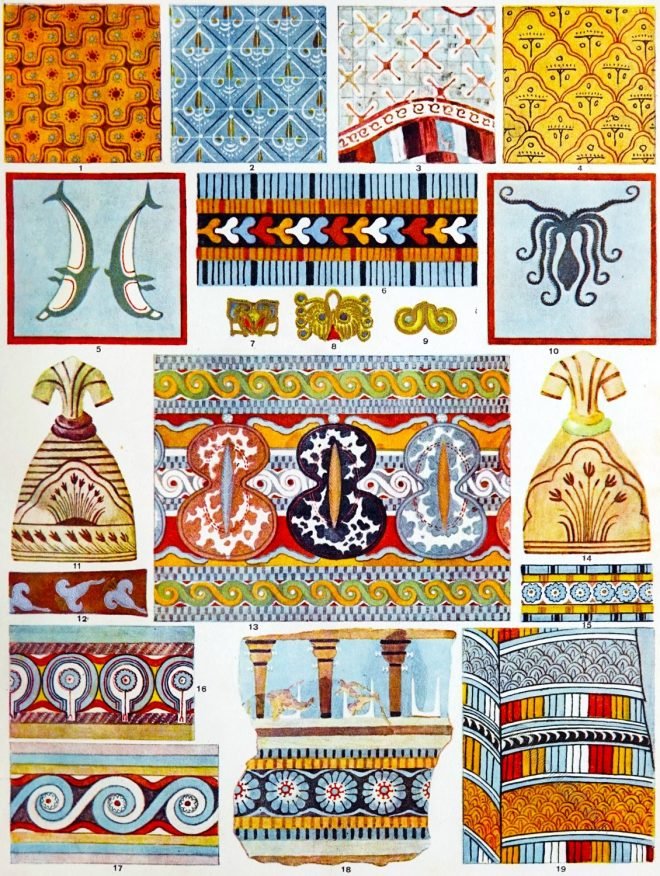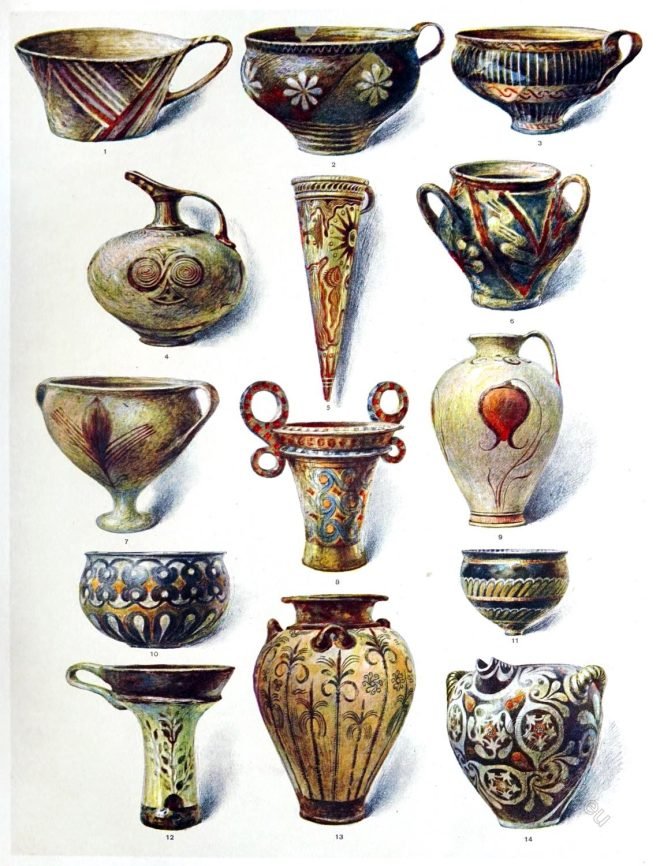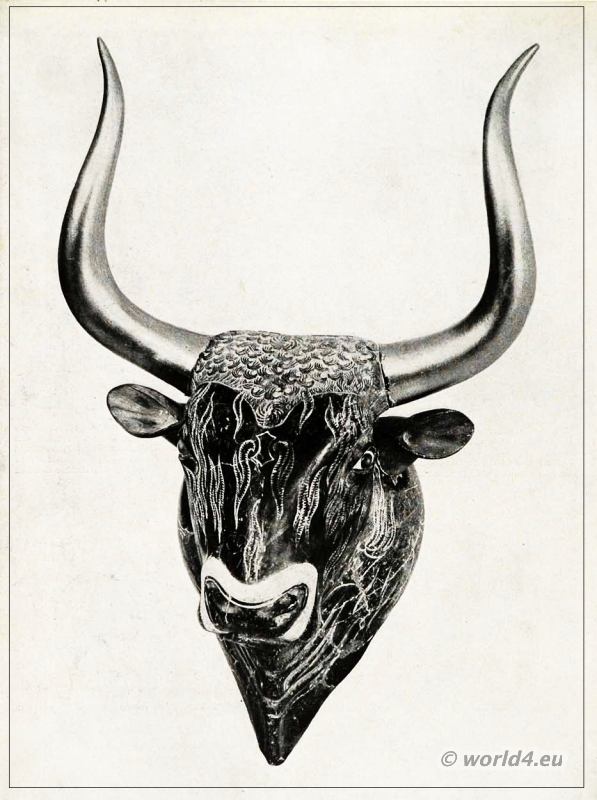Decorative Motives from the Arts of early Crete and Greece. About 2000 B. C. Middle and Late Minoan.
Tag: Ancient Minoan
Earthenware from Crete and Greece. Middle and Late Minoan.
CRETE AND GREECE. Middle and Late Minoan circa 2000—1200 B.C. Vessels from Cnossus, Mochlos, Korakou, Palaikastro, Melos.
Minoan or Mycenaean Age. Costumes of ancient cretan people.
The Cretan costume of Antiquity. Long ago on the island of Crete there lived a group of people called Cretans and belonged to Minoan or Mycenaean Age.
Early Cretan Libation Vessel
Early Cretan libation vessel, found at Crete, New Palace Knossos.
The Snake Goddess from Knossos. Priestess in Minoan Crete 2000 B.C.
The Snake Goddess from Knossos, ca. 2000 B.C. Regarded as characteristic of feminine fashion in Minoan Crete.
Minoan. Our Lady Of The Sports.
Minoan costume. Our Lady Of The Sports with male loincloth, Knossos. Chryselephantine Image of Goddess with male Loinclothing: Our Lady Of The Sports Views of Corset, Girdle and male loin… Read More






